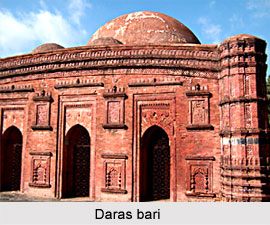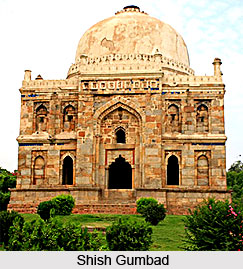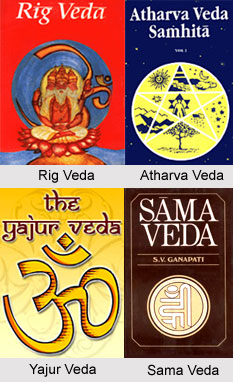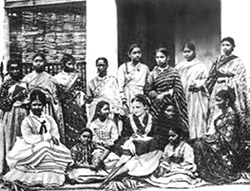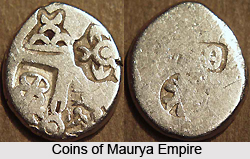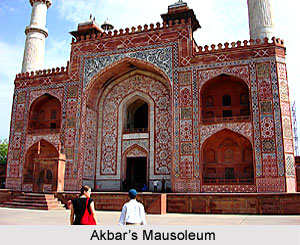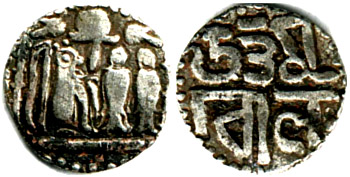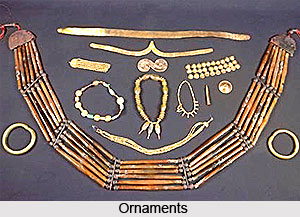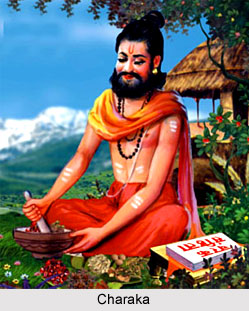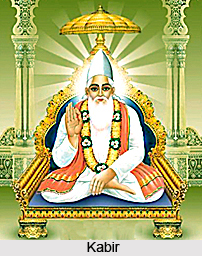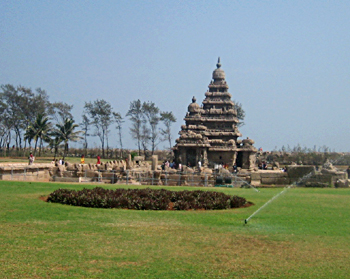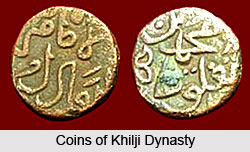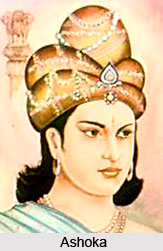In the dying days of the Mauryan Empire the weak successors of Ashoka could not retain their former prosperity and magnificence, which the Empire had once earned. After the death of Ashoka, the power of the imperial Mauryas diminished due to revolt of the provincial governors and foreign invasion. The Later Mauryas were not competent enough to subdue the provincial revolts. Brahadratha, the last Maurya, was reigning in a diminishing glory. In a situation of complete failure of administrative machinery, his principal general Pushyamitra Shunga organized a coup d` etat against him and assassinated him in 185 BC. Finally Pushyamitra ascended the Magadhan throne and installed the Shunga dynasty in Magadha. However Romila Thapar puts that Pushyamitra`s coup assassinated the last Maurya in 180 or 181 BC. In this way the grandeur of the majestic Mauryas met a violent end and the new House established by Pushyamitra came to be known as the Shunga Dynasty.
The lineage or ancestry of Pushyamitra Shunga is shrouded in mystery. However several conflicting theories have been put forward by the scholars regarding the actual parentage of Pushyamitra Shunga. According to Panini, Shungas were the Brahmans of Bhradwaj Gotra. The Brahmana lineage of the Shungas was also supported by the references to the Shunga teachers of the Vedic texts. The "Brihadaranyaka Upanishada" refers to Saungiputra as a teacher. Kalidasa in his "Malavikaagnimitram" mentions that, Shungas are the descendants of the Baimbika family of Kashyapa gotra. The Buddhist work "Divyavadana" suggests that Pushyamitra Shunga had kinship with the Mauryan House, but these views were however refuted by the scholars. Dr H.C Roychowdhury however provides reconciliation of these conflicting theories. According to him the term "Baimbika" does not refer to any caste, rather the term signifies "a gallant lover". Further it has been pointed out in the Puranas that the Shungas include two distinct group of kings- Baimbika family to which Pushyamitra belonged and the other is the group to which the successors of Pushyamitra belonged. Later the views established by the Puranas were generally accepted.
Pushyamitra Shunga was a shrewd diplomat. His career for long 36 years is marked with his astute diplomacy in the field of administration and his relation with the neighbouring countries. After the successful campaigning against the Mauryas and the usurpation of the Magadhan throne, Pushyamitra accelerated the consolidation of his empire within his own stronghold. He hastened to eliminate all the chances of counter-revolution. In order to smother any pro-Mauryan disruption, Pushyamitra adopted several steps. According to the historians, Pushyamitra was a perfect Machiavellian in managing the administration of the consolidated Empire. Firstly he imprisoned the ministers of the late Mauryan kings, secondly he appointed his kinsmen to hold the responsibility of the provincial kingdom so that they could quell any chance of revolt.
The reign of Pushyamitra Shunga was marked with his huge career of warfare. Though the valiant king Pushyamitra overran the Mauryas, he did not enjoy unquestioned allegiance everywhere. The supremacy of Pushyamitra was opposed by the Andhras and the Kalingas, who had unfurled the flag of independence. Pushyamitra was a valiant conqueror but he however could not extend his kingdom like the Mauryas. Pushyamitra however strengthened his kingdom in the areas of Magadha, Oudh, Vidisha and parts of Punjab. Pushyamitra`s relation with the Vidarbha right from the beginning of his career was not in good terms. During the reign of the last Mauryan Brahadratha, the courtiers were divided into two factions due to their different attitudes against the Vidarbha chief. The Vidarbha ruler Yajnasena was the relative of a minister of the pro-Mauryan minister as is suggested by Kalidasa. The conflict between Pushyamitra Shunga and the Mauryans began at this point. The relative of the Mauryan minister revolted, Pushyamitra imprisoned the Mauryan minister but Yajnasena, the Vidarbha chief did not accept the legality of Pushyamitra Shunga. Consequently Yajnasena, imprisoned his cousin Madhavasena. Yajnasena was in bad terms with his cousin due to his pro-Shunga leanings. At that time, the crowned prince was Agnimitra, son of Pushyamitra, who demanded the release of Madhavasena. Agnimitra, directed by Pushyamitra campaigned against the Vidarbha king Yajnasena and defeated him. Vidarbha was partitioned between the Yajnasena and Madhavasena and both accepted sovereignty of Pushyamitra Shunga.
The reign of Pushyamitra Shunga is important in the history of India probably due to his heroic struggle against the Yavanas or the Bactrian Greeks. During his reign, the renewed Greek invasion in northern India was a threat to the consolidated empire of Pushyamitra Shunga. But Pushyamitra successfully subdued the Greek intrusion and established the powerful Hindu empire. However there is a controversy among the historians regarding the relation of Pushyamitra with the Yavanas or about the date and place of the first Yavana invasion during the reign of Pushyamitra. According to Patanjali, a contemporary of Pushyamitra, the Yavanas besieged the areas upto Chitore. This theory is further supported by the Yuga Puranas section of the Gargi Samhita. But other historians prefer to fix the actual date of the Yavana invasion even before Pushyamitra ascended the throne. In spite of enough differences among the scholars on the point that whether the first Yavana invasion took place in the reign of Pushyamitra Shunga, there is an unambiguous reference to a war of Pushyamitra with the Yavanas during the culmination of his reign. However it has been suggested by a group of historians that the Shunga Empire extended upto the extent of the Indus River in Punjab. To some historians, the credit of overthrowing the Yavanas cannot be ascribed to Pushyamitra Shunga. In the drama "Malavikaagnimitram" Kalidasa refers to a war between the Yavanas and the Shunga descendant Vasumitra, grandson of Pushyamitra. Both the classical and the modern scholars conform on the reference of Kalidasa. According to them, Pushyamitra in his advanced age performed an Ashwamedha Yajna and let lose the sacrificial horse, which was seized by the Yavanas on the banks of the river Sindhu. However Pushyamitra was not able to guard his horse from the Yavanas. It was Vasumitra, grandson of Pushyamitra, in a hotly contested battle routed the Yavana and restored magnificence of the Shunga Dynasty. There is a good deal of controversy among the scholars regarding the identification of the area surrounding the Sindhu River and the name of the Yavana ruler who seized the sacrificial horse. To Professor Rapson, the river Sindhu mentioned by Kalidasa refers to the region around Kali Sindhu, a tributary of Chambal near Chitore. R.C. Majumdar straightly refutes the view of Rapson, pointing conclusively that river Sindhu refers to the Indus River in Punjab. Whatever the controversy is, modern scholars in the present days have made it clear in unequivocal terms that the Shunga Empire included the entire territory around the river Sindhu in Punjab. The historians, in spite of enough disputes among them, have clearly defined the name of the Yavana chief who was defeated by the Shungas as Menander.
The historians though have unanimously opined that after overthrowing the Yavanas, the Shungas established a strong Hindu empire. Yet in the later years the historians again are in controversy about the nature and chronology of the Yavana invasion that took place during the reign of Pushyamitra Shunga. Kalidasa`s drama "Malavikaagnimitram" is a main source regarding this controversy. The theory as established by Kalidasa`s "Malavikaagnimitram" mentions that the first Yavana invasion took place in the first part of Pushyamitra`s reign and is completely silent about any Yavana invasion at the closing of his reign. According to Kalidasa, the leader of the Yavana invasion was Demetrius, son of Euthydemus who was defeated by Vasumitra on the banks of the river Sindhu. But Kalidasa differs with Professor Rapson about the exact location of the Sindhu. Since Kali Sindhu was far from Vidisha, Kalidasa suggests that the Sindhu River, around which the battle took place, refers to the Sindhu river of Punjab. Secondly there was no archaeological evidence supporting the fact that Demetrius seized the areas near Kali Sindhu, rather there are facts about the war between the Shungas and the Yavanas in the surrounding region of Indus in Punjab. Finally the "Gargi Samhita" narrates that Yavana chief Demetrius penetrated upto Pataliputra, but could not proceed further being encountered by the formidable opposition of Pushyamitra Shunga.
The second Yavana war, according to some historians, took place after the death of Pushyamitra Shunga. The description of the second Yavana invasion is found in the Yuga Purana. The fact of the second Yavana invasion is also corroborated by Mahabhasya of Patanjali. Mahabhasya mentions that when the strong hands of Pushyamitra were removed from the administrative machinery, the Yavanas hastened upto Pataliputra with a renewed attempt of invasion after attacking Panchala and Saketa. However, the theory that there was a second Yavana invasion was not free from inconsistencies. According to Yuga Purana, the Yavana invasion mentioned in "Malavikaagnimitram" took place sometime after the reign of Salisuka, the Maurya King and the Yuga Purana did not have any reference to Pushyamitra Shunga. Secondly it is mentioned in the Yuga Purana, that when the Yavana uprising took place in Pataliputra, there was no sovereign king there. Hence if the invasion during the Shungas would not have occured, they would still have been in the throne of Pataliputra.
Pushyamitra Shunga performed the horse sacrifices and thereby triumphed in the Brahmanical revival in the history of ancient India. The horse sacrifice or the Ashwamedha Yajna signified the supremacy of Pushyamitra and Brahmanism during the Shunga period. According to the Ayodhya inscription of Dhanadeva, Pushyamitra performed two horse sacrifices or Ashwamedha Yajna. The first one was probably during the time when Pushyamitra ascended the throne of Pataliputra, ousting the Mauryas and the second sacrifice was due to his victory over the Bactrian Greeks and to proclaim his dominion. Dr H.C Roy Chowdhury holds that the performance of the Ashwamedha Yajna signified the beginning of the Brahmanical reactions, which fully developed during the Guptas. It was Pushyamitra who is credited to have established the strong Hindu Empire in India and according to scholars, Pushyamitra performed the Ashwamedha Yajna in order to celebrate the triumph of the Brahmanical revival in ancient India.
The huge career of Pushyamitra Shunga as a king of Magadha for 36 years was marked with enormous wars and conquests. He consolidated and annexed the fragmented parts under his rule and established a powerful Shunga Empire. However the great warrior Pushyamitra had suffered several reverses at the completion of his reign according to Professor Rapson. At the end of his reign, when the Shunga Empire was not strong enough to put an opposition to the alien invasion, Pushyamitra lost most of the provinces. At that time, the Sattavahana king Satakarni I occupied the kingdom of Avanti, one of the important part of the Shunga Empire. The downfall of the Shungas initiated with the conquering of Avanti by Satakarni I. But Professor Jagannath denied the views of Prof. Rapson and conclusively proved that Avanti remained under the authority of the Shungas. The Nanaghat pillar inscription by queen of Satakarni I also corroborates Prof. Jagannath`s view. Naganika Devi, queen of Satakarni I, did not mention the conquest of Avanti by her husband. According to Prof Rapson, the conquest against the Yavanas, resulted into a huge loss of time and energy, which Pushyamitra in his dying days could not recover. Moreover Pushyamitra was attacked by Kharvela of Kalinga twice, which finally dissolved the Shunga Empire. However historians in the modern days are of the opinion that the downfall of Pushyamitra Shunga was the outcome of the huge loss during the war against the Yavanas.


